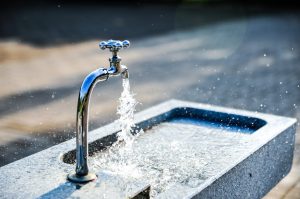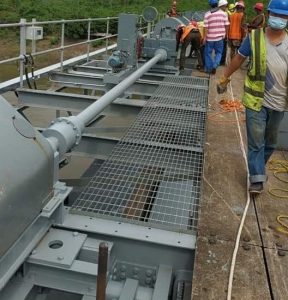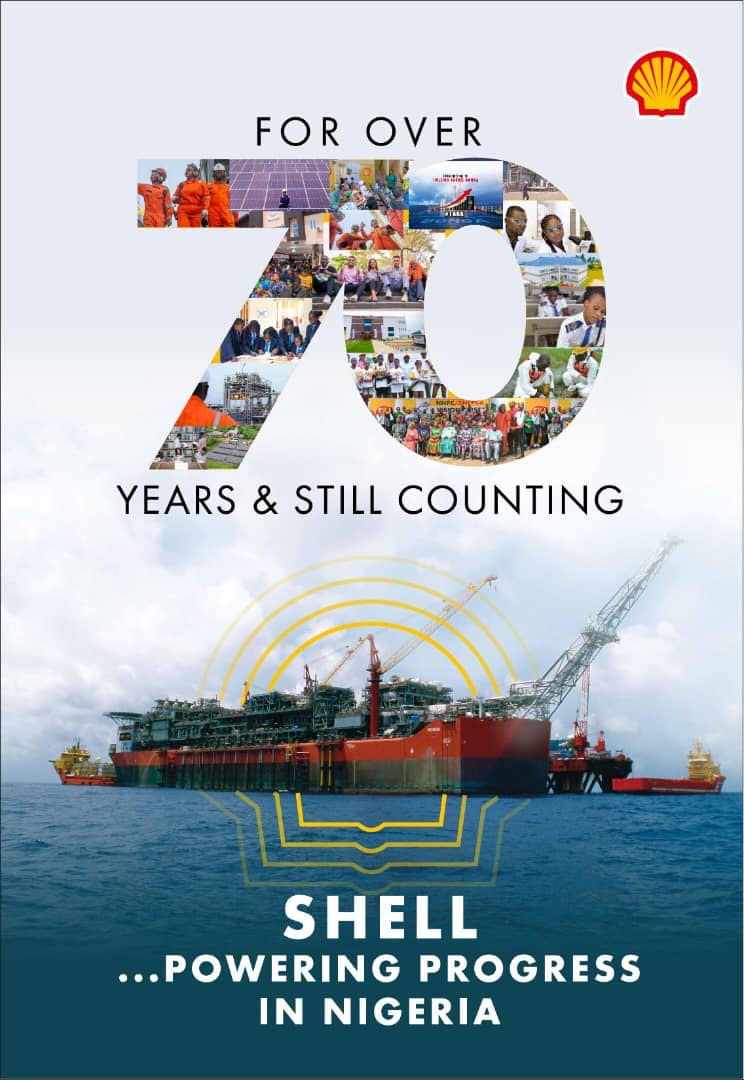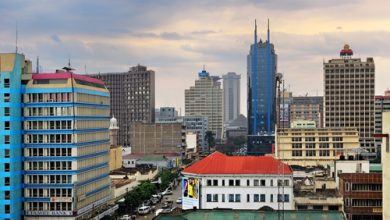
For the records: Being speech delivered by Otunba Olufemi Odumosu, Managing Director/CEO, Ogun-Oshun River Basin Development Authority in commemoration of 2022 World Water Day held in Abeokuta
Thank you all for taking time out and being present here at this important occasion, which is equally celebrated worldwide.
Today, we celebrate one of the most important days, “World Water Day”, in the activities of our parent Ministry, the Federal Ministry of Water Resources and the Water Family nationwide under the able leadership of the Honourable Minister, Engr. Suleiman H. Adamu, FNSE, FIWE, FAEng World Water Day is celebrated on 22nd March each year as a way to focus attention on the value of freshwater and to encourage the sustainable use of freshwater resources.
World Water Day is an International Day of global celebration; it is meant to encourage people around the world to learn more about emerging water issues, challenges in water provision and management and water-related problems and to take actions to make a difference.
World Water Day is encouraged all through the world to build the consciousness of individuals towards the significance of water in different fields of life including climate, farming and general well-being. World Water Day is held annually as a means of focusing attention on the importance of freshwater and advocating for the sustainable management of freshwater resources.


It is about taking action to tackle the global water crisis, in support of Sustainable Development Goal (SDG) 6: water and sanitation for all by 2030. In this year 2022, World Water Day is celebrated under the theme “Groundwater: Making the invisible visible”, and UNESCO is the lead UN Agency. A new World Water Development Report is released each year by the World Water Day, which provide decision-makers with tools to formulate and implement sustainable water policies. Page 2 of 8 This report is coordinated by UNESCO’s World Water Development Programme (WWAP) on behalf of UN-Water. The annual theme for World Water Day is aligned with the focus of the report.
The 2022 edition of the World Water Development Report (WWDR 2022) entitled “Groundwater: Making the invisible visible” was launched on 21 March 2022 at the 9th World Water Forum currently going on in Dakar, Senegal. The United Nations General Assembly adopted resolution A/RES/47/193 of 22 December 1992 by which 22 March of each year was declared World Day for Water, to be observed starting in 1993. Countries were invited to devote the Day, as appropriate in the national context, to concrete activities such as the promotion of public awareness through the publication and diffusion of documentaries and the organization of conferences, round tables, seminars and expositions related to the conservation and development of water resources. As enumerated by the United Nations, a core focus of World Water Day is to support the achievement of Sustainable Development Goal 6: water and sanitation for all by 2030.
Hence, the aptness of this year’s theme “Groundwater: Making the Invisible Visible”, cannot be over stated as the focus is on Groundwater, an invisible resource with an impact that is visible everywhere and to everyone. Groundwater is invisible, but its impact is visible everywhere. Out of sight, under our feet, groundwater is a hidden treasure that supports our lives. As defined in simple terms, Groundwater is the water present beneath Earth’s surface in rock and soil pore spaces and in the fractures of rock formations. It is responsible for about 30 percent of all readily available freshwater in the world. Almost all the liquid freshwater in the world is Groundwater. Most arid areas of the world depend entirely on this resource. Groundwater supplies a large proportion of the water we use for food production and industrial processes. Groundwater is also critically important to the healthy functioning of ecosystems, such as wetlands and rivers. Ground Water is water that lies beneath the earth’s surface, filling pore spaces between the grains of sediment or within the voids of sedimentary rock. Groundwater may also fill fractures in the Rock. Groundwater shapes the Earth through weathering and geomorphologic processes. Rivers, lakes and wetlands are surface manifestations of groundwater, exchanging flow with the groundwater reservoir that feeds them when they need water and takes some of their flow when surface water is present in excess.
This vast Groundwater Reservoir serves as a: Regulator of the fresh water Hydrologic Cycle by mediating the flow of continental surface waters; Chemical factory and conveyor belt for processing Earth’s material and transporting it from the continents to the oceans; Waste repository/processing plant; and, Global life support system. Water becomes Groundwater when Precipitation infiltrates the Geosphere. Groundwater is a source of Drinking water and it is usually purer than surface freshwater in Lakes and Rivers. Groundwater is fresh water (from rain or melting ice and snow) that soaks into the soil and is stored in the tiny spaces (pores) between rocks and particles of soil.
Groundwater accounts for nearly 95 percent of the nation’s fresh water resources. It can stay underground for hundreds of thousands of years, or it can come to the surface and help to fill the rivers, streams, lakes, ponds, and wetlands. Groundwater can also come to the surface as a spring or be pumped from a well. Both of these are common ways we get Groundwater to drink.
About 50 percent of our municipal, domestic, and agricultural water supply is from Groundwater. As part of the Hydrological Cycle, Groundwater is a major contributor to flow in many streams and rivers and has a strong influence on river and wetland habitats for plants and animals. People have been using groundwater for thousands of years and continue to use it today, largely for drinking water and irrigation.


Life on Earth depends on groundwater just as it does on surface water. Groundwater feeds Springs, Rivers, Lakes and Wetlands, and seeps into oceans. It is recharged mainly from rain and snowfall infiltrating the ground, its extraction to the surface is mainly by pumps and wells. Groundwater is a vital water supply for humanity. It provides drinking water entirely or in part for as much as 50% of the global population and accounts for 43% of all of water used for irrigation. Worldwide, 2.5 billion people depend solely on groundwater resources to satisfy their basic daily water needs.
According to a UN-FAO documentation, Groundwater is considered as the invisible ingredient in food in recognition that Agriculture is the largest consumer of the world’s freshwater resources and feeding a global population expected to reach 9 billion people by 2050 will require a 50 per cent increase in food production, such that approximately Page 4 of 8 70% of global groundwater withdrawals are used in the agricultural sector, for production of food, livestock and industrial crops. Life would not be possible without groundwater. Most arid areas of the world depend entirely on groundwater.
It supplies a large proportion of the water we use for drinking, sanitation, food production and industrial processes. It is also critically important to the healthy functioning of ecosystems, such as wetlands and rivers. In essence, the World Water Day celebration this year, is highlighting the hidden resource that stores 98 per cent of the world’s liquid freshwater – Groundwater. Experts say that safeguarding groundwater quality is key to achieving the Sustainable Development Goals, especially those related to water (SDG 6), health (SDG 3), and food production (SDG 2).
As we are all very much aware, Ogun – River Basin Development Authority, as one of the direct custodian and managers of the water resources within the River Basins in Nigeria, is specifically taking the lead within our coverage areas of the four States of Ogun, Osun, Oyo and Lagos and ensuring this celebration as part of its mandate for Integrated River Basin Management (IRBM), Watershed Management, Water Conservation and Ecosystem Protection. Groundwater is not just for human use but is integral to maintaining stream flow and supporting ecosystems such as wetlands.
Over-pumping is already driving biodiversity loss and degrading of groundwater-dependent ecosystems. Making such connections will go a long way in making groundwater visible, and understanding the need to protect it. Groundwater is also considered as a finite resource, as is being over-used in many areas of the world, where more water is abstracted from aquifers than is naturally recharged by rain and snow. Continuous groundwater over-use can lead to depletion of this resource, compromising significant groundwater-dependent ecosystems and threatening to undermine basic water supply, agricultural production, climate resilience and food security.
Avoiding the problems of groundwater depletion requires increased management and governance capacity at multiple integrated levels and in inter-sectoral approaches. As such, multiple disciplines need to come together to shine the light on groundwater. We need all perspectives and different disciplines – the social scientists, the lawyers and the engineers to pull all the knowledge, and for communicators to make the invisible groundwater visible. Page 5 of 8 Groundwater management is a process that aims at the sustainability for groundwater to benefit each and every stakeholder involved in the usage of groundwater, that stakeholders are farmers, administrators, scientists, environmentalists, and individual consumers society. Among the water resources on earth, Ground water is a resource hidden in the Rocks of the earth crust.
For various reasons notably the fact that this water is not directly visible but also as a consequence of education and longstanding traditions, the properties and physical laws governing groundwater are not well known. According to the UNESCO documentation, Groundwater accounting for approximately 99% of all liquid freshwater on Earth, groundwater has the potential to provide societies with tremendous social, economic and environmental benefits and opportunities.
Groundwater already provides half of the volume of water withdrawn for domestic use by the global population, including the drinking water for the vast majority of the rural population who do not get their water delivered to them via public or private supply systems, and around 25% of all water withdrawn for irrigation. However, this natural resource is often poorly understood, and consequently undervalued, mismanaged and even abused, rendering it vulnerable to depletion and pollution. In the context of growing water scarcity across many parts of the world, the vast potential of groundwater and the need to manage it sustainably can no longer be overlooked. In realization of the Groundwater quality susceptibility to pollution, it is recognized that Groundwater is polluted in many areas and the remediation is often a long and difficult process. This increases the costs of processing groundwater, and sometimes even prevents its use. The use of chemical and organic fertilizers in Agriculture is a serious threat to groundwater quality. Other diffuse contaminants of concern to groundwater from irrigated agriculture include pesticides and antimicrobial-resistant bacteria.
Groundwater can become contaminated in many ways. If surface water that recharges an aquifer is polluted, the groundwater will also become contaminated. Contaminated groundwater can then affect the quality of surface water at discharge areas. Groundwater can also become contaminated when liquid hazardous substances soak down through the soil into groundwater. Contaminants that can dissolve in groundwater will move along with the water, potentially to wells used for drinking water. A combination of moving groundwater and Page 6 of 8 a continuous source of contamination can, therefore, pollute very large volumes and areas of groundwater.


The quality of Ground water in some parts of the country, particularly shallow ground water, is changing as a result of human activities. Ground water is less susceptible to bacterial pollution than surface water because the soil and rocks through which ground water flows screen out most of the bacteria. Bacteria, however, occasionally find their way into ground water, sometimes in dangerously high concentrations. But freedom from bacterial pollution alone does not mean that the water is fit to drink.
There are many unseen dissolved mineral and organic constituents that are present in ground water in various concentrations. Most are harmless or even beneficial; though occurring infrequently, others are harmful, and a few may be highly toxic. There is also the need for monitoring groundwater as in some areas of the world, we do not even know how much groundwater lies beneath our feet, which means we could be failing to harness a potentially vital water resource. Sustainable groundwater use requires continuous monitoring of water consumption, particularly in irrigation systems serviced from non-renewable aquifers.
The drilling of observation boreholes monitoring network by NIHSA is therefore a commendable effort to be extended nationwide. The aim of the monitoring network is to prevent groundwater pollution due to a number of industrial activities and individual interactions and to preserve it for present and future usages. Based on the current situation and statistics, we have the following reasons for taking groundwater management seriously:
The World is facing groundwater scarcity : due to rate of exploitation of§ groundwater, it has led to over-extraction /depletion of ground water and reduced the water level of the aquifer Groundwater pollution is a serious concerned: groundwater is susceptible to§ pollution. Groundwater is a non-renewable resource, practically: Groundwater recharge takes§ its time. In fact, as per a study conducted by the University of Victoria, groundwater is practically a non-renewable resource.
Because less than 6% of the water is replenished within a human lifetime. Groundwater is a super-important resource. It’s used by more than a third of world’s population everyday for their Page 7 of 8 drinking water. There’s something called “safe yield” of groundwater. “Safe yield” means the amount of water that can extract from an aquifer. If groundwater is extracted more than the safe yield, then it raises the risk of water scarcity. To meet statutory regulation: fortunately, government bodies around the world§ are taking serious steps to combat all the issues described above. In Nigeria, the statutory body, Ogun Oshun River Basin Authority is responsible for groundwater development within it’s area of coverage. OORBDA has introduced the installation of treatment plant to complement its groundwater development.
Groundwater is a very important natural resource and has a significant role in the economy. It is the main source of water for irrigation and the food industry. The most important about using groundwater is to find the right balance between withdrawing and letting the aquifer’s level recover to avoid overexploitation and to avoid pollution of this crucial resource. We in Ogun-Oshun RBDA have been able to turn Groundwater from its invisibility to being highly visible with the following Projects: Construction of more than 400Nos. Boreholes for various Communities’ access to water provision in the RBDA’s coverage States of Ogun, Osun, Oyo and Lagos Commissioning of Ila Orangun Mini Water Supply Scheme, Osun State Commissioning of Ife-Odan Mini Water Supply Scheme, Osun State Commissioning of Ajinapa Mini Water Supply Scheme, Oyo State. Green House Technology Farms in Abeokuta, Ibadan, Sepeteri and Iwo Expansion of the Ogun-Oshun RBDA Bottle Water Factory Collaboration on provision of Community GroundWater Development on the Ogun[1]Oshun RBDA Projects in the Nigerian Army Brigade Command, the Ogun State Police Command and the Nigerian Security and Civil Defence Corps Command in Ogun State Collaboration on provision of Community GroundWater Development on the Ogun[1]Oshun RBDA Projects in the Nigerian Television Authority, Abeokuta, Federal Neuro Psychiatric Hospital, Aro Collaboration on provision of Community GroundWater Development on the Ogun[1]Oshun RBDA Projects in some Traditional Oba’s Palaces including Awujale of IjebuLand, Alake of Egbaland
It is my hope that this year celebration would afford us in this catchment area of Ogun_Oshun RBDA, the opportunity to know and further appreciate our Groundwater and accord the due respect in ensuring its cleanliness and its protection from other human activities which may cause its being damaged by contamination or pollution and abuse.


We can look after our Groundwater with an action as simple as preventing its contamination, minimize use of fertilizers in our garden that may be runoff and penetrate into the water table and percolate into the Groundwater.
The Key messages from UNESCO documentation from this year World Water Day is such that the realisation is equally applicable for us are that: Groundwater is invisible, but its impact is visible everywhere in the world. Almost all of the liquid freshwater in the world is groundwater, supporting drinking water supplies, sanitation systems, farming, industry and ecosystems. What we do on the surface matters underground. We must only put harmless, biodegradable products on the soil and use water as efficiently as possible. Groundwater crosses borders.
We must work together to manage transboundary groundwater resources. We cannot manage what we do not measure. Groundwater must be thoroughly explored, analyzed and monitored. Groundwater will play a critical role in adapting to climate change. We must protect and explore groundwater, balancing the needs of people and the planet Let me seize this opportunity to appreciate the able leadership of our Honourable Minister of Water Resources, Engr. Suleiman Hussein Adamu FNSE, FAEng, FNIWE, for ensuring that this year World Water Day is celebrated in Nigeria. It is no doubt a success story that has added another feather to the cap of the quality leadership of the man in charge at the helms of affairs in the Federal Ministry of Water Resources.
I therefore also wish to humbly and respectfully, on behalf of the Honourable Minister of Water Resources, Engr. Suleiman Adamu FNSE, FAEng, FNIWE, the Permanent Secretary, Mrs. Didi Walson-Jack, mni, express their Ministerial good tidings and most especially appreciate all our invited guests and distinguished participants and thank you all for sharing in the joy and being part of the success story on this auspicious occasion today as we celebrate the World Water Day in Nigeria. Once again, I thank you all and wish you all a happy celebration.
Thanks and God bless.
Otunba Olufemi Olayemi Odumosu,
Managing Director/CEO, Ogun-Oshun RBDA
FOOTNOTE: You want to share story with us? You want to advertise with us? You need publicity for product, or service, or event? Contact us on WhatsApp +2348073463653 or email penpushing@yahoo.com
#news #water #metro #features #opinion #penpushing #media






